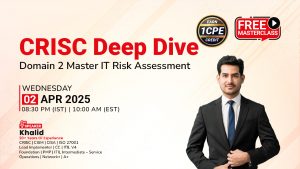ISO 27001: Best Practices to Secure Business Information
Protecting important information and keeping it safe is extremely important for companies nowadays. With more and more data breaches and cyber attacks happening, businesses need to have a strong plan in place to secure their sensitive and confidential data. This is where ISO 27001 comes into play.

ISO 27001 serves as a globally recognized framework, offering comprehensive guidance for organizations to establish a robust information security management system. It offers a comprehensive framework to identify, assess, and mitigate risks related to information security. ISO 27001 is a valuable tool to safeguard critical information from potential threats. It provides a structured approach for organizations to implement effective security measures, enabling them to operate with confidence while maintaining the trust of customers and stakeholders by safeguarding sensitive data from cyber threats.
What is ISO 27001?
ISO 27001 is a globally acknowledged Information Security Management Systems (ISMS) standard that offers a set of guidelines and best practices for organizations to secure their sensitive information and data from potential threats and breaches. It outlines a structured approach for companies to identify and assess risks, implement appropriate security controls, and regularly monitor and enhance their security measures.
Best Practices to Secure Business Information
Implementing ISO 27001, a key standard for information security management systems, involves a series of important steps. These steps create a strong framework designed to protect an organization’s sensitive data against a wide range of digital threats.
1. Management Support
Strong commitment from management is crucial at the beginning. High-level support from the top of an organization is essential because it provides the necessary resources for success. This foundational backing gives the team the right tools and fosters a culture of vigilance and responsibility, emphasizing the importance of protecting business information.
2. Scope Definition
As with any strategic endeavor, defining the scope is extremely important. A reasonable selection between encompassing the whole of an organization or a specific segment therein is fundamental. Maintaining a manageable scope reduces the project’s complexity, reducing the potential for project risks to spiral out of control.
3. Risk Assessment
The core of ISO 27001 implementation resides within the meticulous assessment of risks. By adopting established methodologies like SWOT (Strengths, Weaknesses, Opportunities, Threats) and PEST (Political, Economic, Social, Technological) analysis, organizations can effectively identify vulnerabilities and threats that could potentially compromise their business operations. Clarity in defining acceptable risk thresholds ensures that subsequent processes are strengthened by accurate risk evaluations, thereby setting the stage for a robust security strategy.
4. Risk Treatment
Once vulnerabilities are identified, the orchestration of risk treatment commences. This critical phase encompasses diverse strategies, encompassing the application of security controls, risk transfer through insurance, cessation of vulnerable activities, or the deliberate acceptance of manageable risks. Each course of action is crafted to guide the organization toward achieving an optimal balance between security, practicality, and cost-effectiveness.
5. Statement of Applicability
ISO 27001 includes a crucial section called Annex A, which contains a total of 93 security controls. These controls cover various areas of information security, such as access control, cryptography, physical security, and more.
To implement ISO 27001, an organization must carefully evaluate each of the 93 controls and determine which ones are relevant and applicable to their specific business context and operations. This evaluation takes into account the organization’s size, industry, regulatory requirements, and potential risks.
During this assessment process, the organization also considers the objectives and rationale behind each control. This helps them understand the purpose and logic behind the control, providing a comprehensive view of how it can be effectively implemented within their environment.
6. Control Implementation
With the blueprint in hand, the intense task of implementing controls unfolds. This entails consistently integrating new technologies and practices into the organizational fabric. A tactful approach is required to navigate potential resistance to change, underlining the indispensable role of training and awareness programs.
7. Develop Policies and Procedures
Establishing clear and well-defined security policies and procedures is essential to safeguarding an organization’s valuable assets. This process involves creating straightforward guidelines that help ensure consistent security practices are followed across all departments and operations. These policies provide practical instructions for maintaining security standards, guiding employee actions, and efficiently managing resources that protect the organization’s assets.
8. Training and Awareness
The human factor is underlying in fortifying information security. Training and awareness programs give employees the cognitive tools to navigate evolving threats. Regular interventions serve as a beacon, illuminating new policies and procedure aspects and fostering a collective defense against the finer points of social engineering attacks.
9. Monitoring and Review
ISO 27001 subscribes to the Plan-Do-Check-Act (PDCA) cycle, inherently underlining the need for continuous vigilance. Regular internal audits and reviews are conducted to evaluate the efficacy of the ISMS implementation. Recommendations are heeded, and policy and procedure enhancements are implemented, fostering a dynamic, responsive security posture.
ISO 27001 with InfosecTrain
Achieving ISO 27001 certification demonstrates an organization’s robust dedication to continuously improving, securing, and managing its precious information assets. This dedication is demonstrated through meticulous risk evaluations, adherence to regulations, and the implementation of adequate controls. At InfosecTrain, we provide comprehensive training to prepare individuals for ISO 27001 certification exams. Our esteemed instructors, possessing extensive industry experience, will lead engaging and interactive training sessions tailored for the ISO 27001 standard certification examination.
TRAINING CALENDAR of Upcoming Batches For ISO 27001 : 2022 LA
| Start Date | End Date | Start - End Time | Batch Type | Training Mode | Batch Status | |
|---|---|---|---|---|---|---|
| 05-Apr-2025 | 18-May-2025 | 19:00 - 23:00 IST | Weekend | Online | [ Close ] | |
| 31-May-2025 | 06-Jul-2025 | 19:00 - 23:00 IST | Weekend | Online | [ Open ] |







 1800-843-7890 (India)
1800-843-7890 (India)